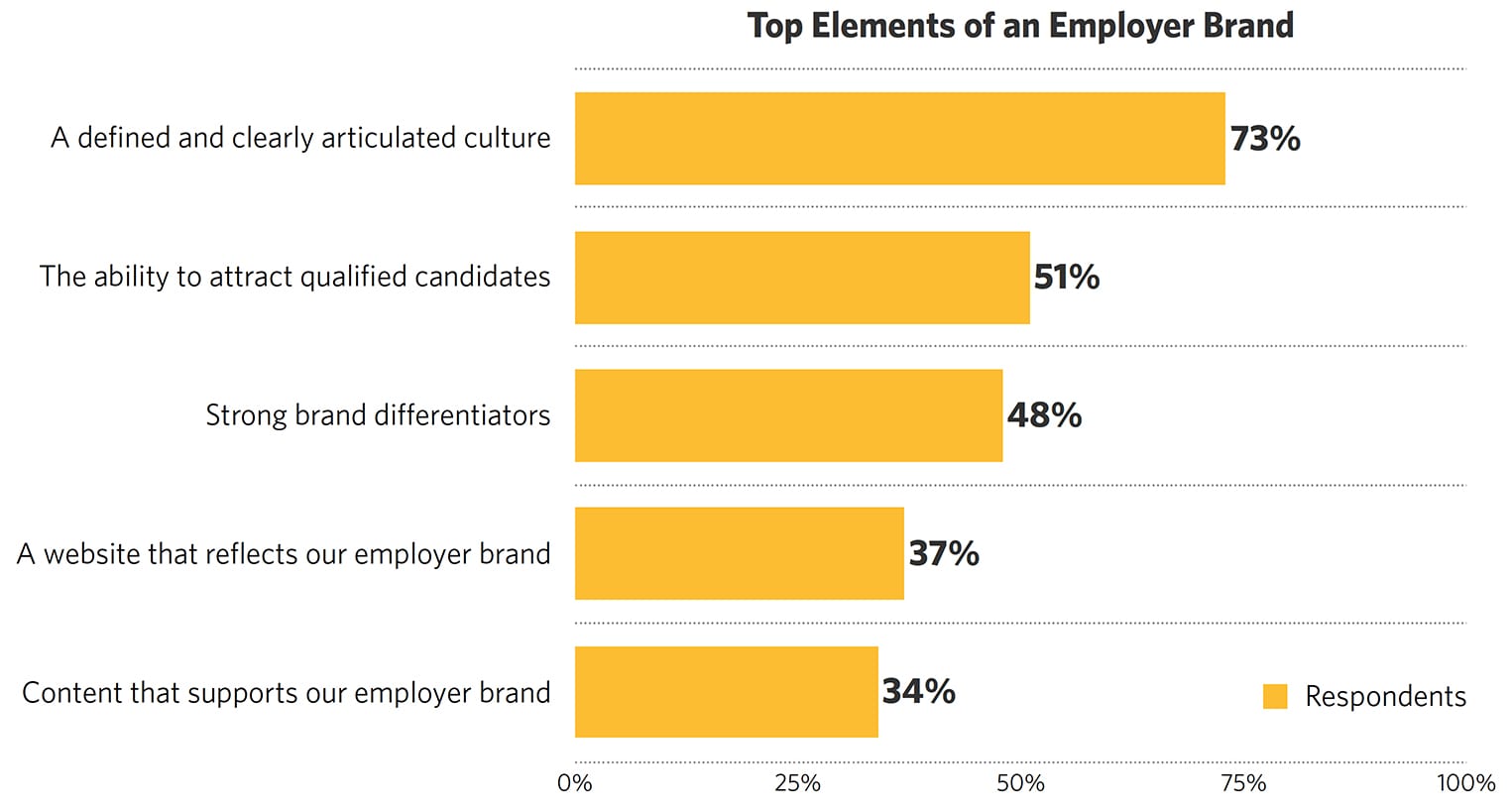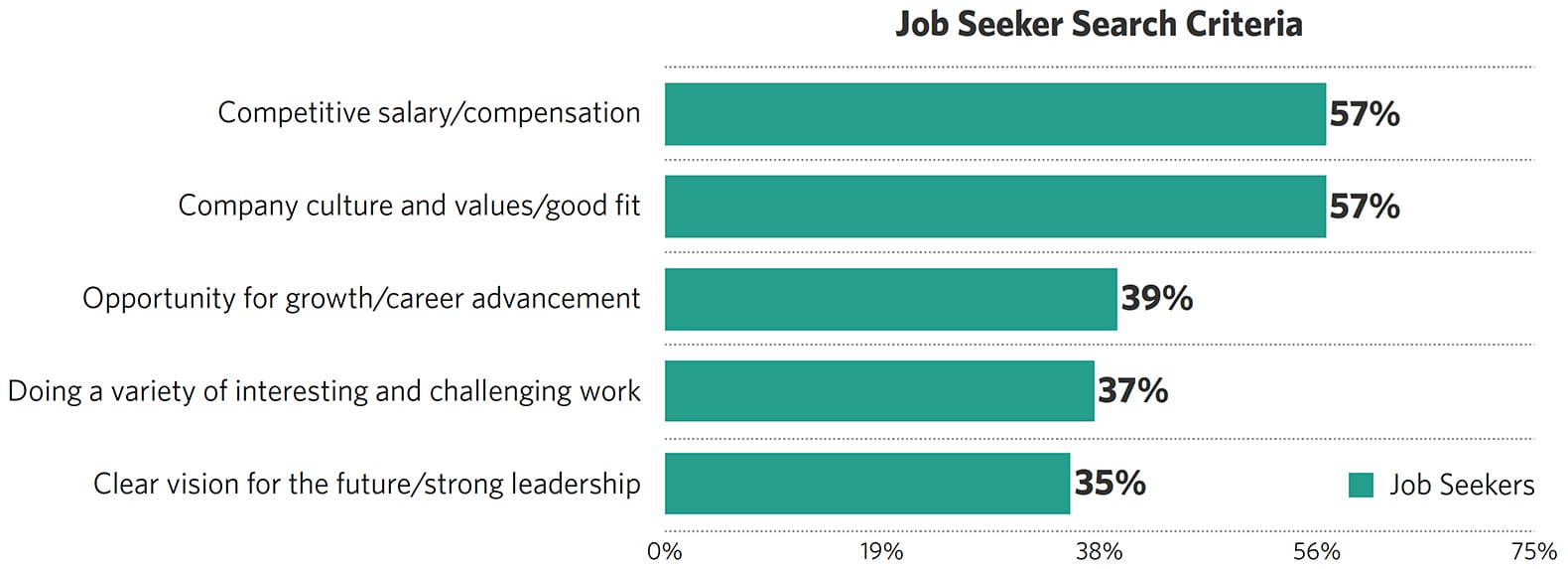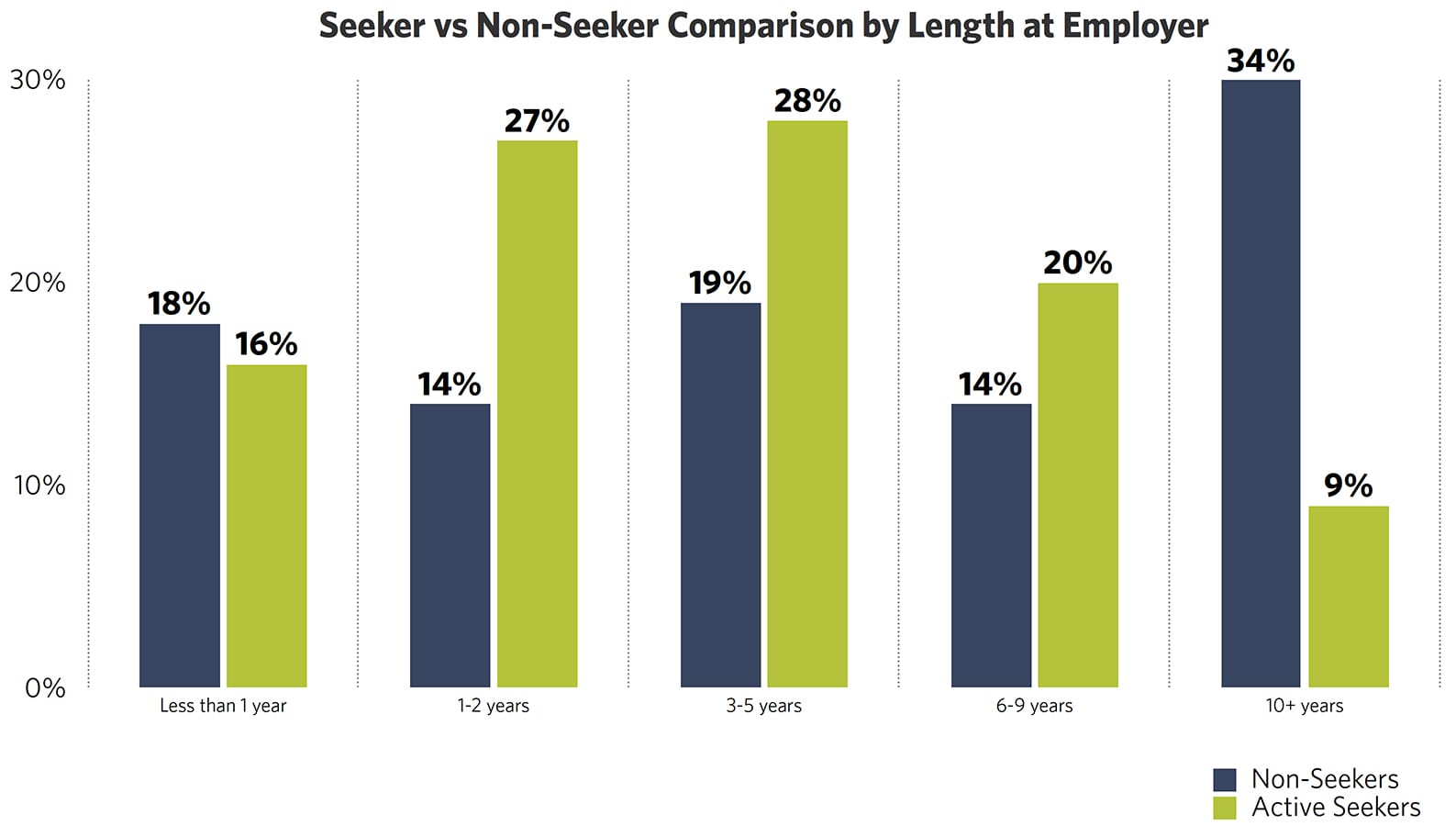Employer Branding: Buy Into It or People Won’t Buy Into You
So, what is “Employer Branding”? In simplest terms, your employer brand is your reputation as a place to work. Your employer brand consists of two important elements:
- The quality of your reputation as an employer. How attractive is your firm to candidates?
- The visibility of your reputation to potential employees. How widely known is your reputation within a target group of potential employees?
Employer branding is becoming more and more important as talent acquisition and retention is becoming a top challenge – and priority – for small- and medium-sized companies wishing to grow. It is especially important during an economic downturn where every employee counts. Employer branding is a game-changer that small- and medium-sized companies need to rely on since they do not have the luxury of virtually unlimited budgets and resources.

Source: Employer Branding Study, Second Edition, Hinge Research Institute
The Hinge Research Institute (HRI) recently released its “Employer Branding Study, Second Edition.” Here are five key takeaways from it to assist you in understanding how an employer brand can help or hinder your organization’s success and future.
1. We live in the age of social media.
Word—whether positive or negative—travels faster than ever. Gone are the days when potential candidates read what you posted on your corporate website and were sold on your company. Many savvy candidates look to platforms such as Glassdoor or LinkedIn to help them form their perception of your reputation and culture. They post questions in community groups to hear from your past or present employees, customers, vendors, and more. They will research press releases, articles, financial data repositories. They can literally access hundreds of publicly available databases. If your employer branding isn’t strong, your reputation may not live up to the perception—whether real or not.
Also, today’s social media influencers are not just celebrities, best-selling authors, and keynote speakers. Nano influencers typically have less than 1,000 followers but carry influence in specific communities. Have a couple of them talk poorly about your company and you could still be dealing with a lot of unwanted frustrations and headaches.
For many companies, managing their employer brands is so important that they invest in social listening platforms so that they can hear and be aware of what is being said about the organization or key employees on social media—without trying to control or correct the conversations.
2. Job seekers are driven by more than salary and compensation.
The HRI Employee Branding Study shows that company culture and values are just as important as salary and compensation. Many candidates want to work for an organization with a social or environmental mission. Others want a company that will give them days to do volunteer work. How well is your employer branding showcased on your website?
Your company culture is arguably the most important aspect of your employer brand. If your company wants to attract and retain top talent, consider making changes to your culture first.

Source: Employer Branding Study, Second Edition, Hinge Research Institute
3. Talent retention is a challenge for the first 5 years.
The likelihood of an employee becoming an active job seeker increases substantially after only one year and continues to rise until Year 5. Your employer brand can play a large role in whether an employee stays or leaves. Do you have strong brand differentiators? Do you support career growth through training and promotion? Do employees feel that their voices are heard and that they have some project ownership? Is the leadership adapting and changing or does it continue to “do things as we always have.”
Part of your employer brand could be a culture of 360-degree performance reviews where employees can assess managers and employee surveys are conducted periodically to monitor the mood and perception of the staff.
 Source: Employer Branding Study, Second Edition, Hinge Research Institute
Source: Employer Branding Study, Second Edition, Hinge Research Institute
4. Understand the importance of employer branding based on your industry.
When comparing non job seekers to active job seekers, the prevalence of each population varies greatly by industry.
Understanding your industry’s active vs non-active probabilities is important when deciding how much to invest in employee retention and branding. For example, according to the HRI research, one in four employees is looking for a new position. It is also the industry in which active seekers outnumber non-seekers by the highest amount (9 percentage points).
 Source: Employer Branding Study, Second Edition, Hinge Research Institute
Source: Employer Branding Study, Second Edition, Hinge Research Institute
5. Your employer brand doesn’t just influence job candidates and employees.
Many potential partners, vendors, and customers are starting to apply the practice of checking out a company’s reputation and culture before working with them. Many want to see how the company’s management team is perceived. Others feel that they can get an indication of success based on the cultural fit. In any case, be aware that groups that can impact your growth and success may be doing their due diligence beyond just looking at your historical financial performance, credit history, and quality of work.
Finding a good cultural fit is important to job candidates, employees, customers, and business partners. All are looking for companies that share their values, respect their team members, and have strong team dynamics. Take the time to assess your employer branding and see where you should invest time to making it better. A differentiated employer brand is a strong employer brand. Then make sure you can clearly articulate that difference—and use that narrative in highly visible places such as social media and your website. You may be surprised at where you can take your business.









